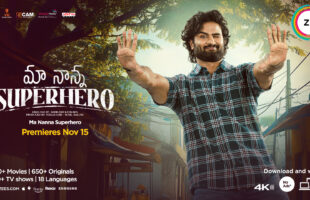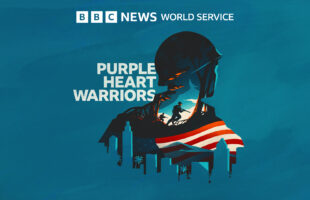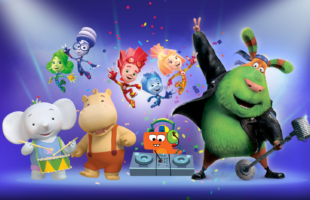October 2007 saw BBC World’s ‘first ever foray into the virtual world’, with a Second Life press conference to introduce its new advertising and marketing campaign The Internationalists. Conference guests could create avatars (virtual selves) within Second Life, which were teleported to the speciallycreated BBC Island, where they had the opportunity to attend a short presentation by Spencer Kelly, the presenter of BBC World’s technology programme Click. Following the presentation guests could explore and interact with the island’s multimedia displays, download BBC World information, collect gifts, chat with other attendees, and enter a competition to win a round-the world ticket. “Just as our channel is branching out into new digital platforms, so too is our marketing approach. We chose Second Life in order to embrace the virtual multimedia world, and to create a truly global arena within which we can not only present our Internationalist audience, but interact with our global media trade,” said Leanne Mackee, Head of Marketing, Global, BBC World. “We felt that the nature of this extraordinary (Internationalist) audience demanded a new approach to marketing communications, and the innovative approach of the Second Life event is absolutely what this audience is about,” said Sian Kevill, BBC World’s Editorial Director, adding that hosting a press conference in Second Life also had benefits from a logistical point of view. “As a global channel with audiences all over the world in a number of time zones, it is impossible to hold a ‘real life’ event that can be attended by everyone. Creating a virtual global press conference was the perfect solution, and allowed us to welcome attendees from Europe, Asia Pacific, Australia and the USA.” Asked whether this showed a serious commitment to the virtual world, or was more about PR and publicity, Kevill said they were delighted with the press conference’s success, in terms of the logistical opportunities it offers, the number of attendees, and their warm feedback. “We have every intention of exploring other event opportunities and editorial initiatives within Second Life and the virtual world in the future,” she said. Mid-November 2007 saw CNN Worldwide create a presence in Second Life by extending iReport into the virtual world. Describing Second Life as ‘a three dimensional virtual world entirely created by its residents’, CNN says the network is looking to those most familiar with the virtual world – the Second Life residents themselves – to determine what constitutes news “in-world”. Comparing it to CNN requesting its real-life audience to submit iReports – user-generated content submitted from cell phones, computers, cameras and other equipment for broadcast and online reports – the network invited the residents of Second Life to share their own ‘SL iReports’ about events occurring within the virtual world. “The thing we most hope to gain by having a CNN presence in Second Life is to learn about virtual worlds and understand what news is most interesting and valuable to their residents,” said Susan Grant, executive vice president of CNN News Services. “Our iReport initiative has generated a great response from CNN viewers and users who contribute a wide variety of news, events and perspectives every day; and we are genuinely excited about the opportunity to forge a similar relationship with Second Life residents, albeit recognizing the need to customize the process for the virtual world.” When Second Life residents observe an in-world event, they can take snapshots, shoot video, or write a report about the event and submit to CNN with a click. Submissions selected by CNN iReport producers will go back into Second Life as SL iReports for residents to view throughout the virtual world. SL iReports may also be viewed and discussed in the real world at CNN.com’s SL iReport Blog, where users are invited to share comments and subscribe to daily e-mail updates sent via Real Simple Syndication (RSS). CNN’s in-world hub includes a news desk for weekly editorial discussions and an amphitheater for in-world events, such as training sessions and appearances by CNN anchors and correspondents. At the network’s hub, residents also can meet SL iReport ambassadors and other resident reporters, as well as access iReport kiosks, free-standing terminals offering free gear tools for gathering and viewing inworld user-generated content. Kiosks offer a variety of free gear and tools including: a ‘HUD’ (heads-up display) a small, collapsible window that resides on the user’s computer screen enabling them to view the latest photo and text SL iReports while they are in Second Life; a continuous stream of the latest video SL iReports; an instructional video on what an SL iReport is and how to submit one; avatarready apparel, including hats, T -shirts and press badges; and a duplicate copy of the kiosk itself, which residents can place wherever they choose across Second Life. Apart from Second Life, BBC World (and BBC Worldwide) struck a deal for content to be made available on YouTube. Speaking only on behalf of the news service BBC World, Kevill says the move is only driven in part by a desire to reach a younger demographic. “The partnership with YouTube reflects both the BBC’s commitment to work with third-party platforms as well as reaching new and underserved audiences,” she says. “YouTube excels at being a leading content destination, with a dynamic community of users who create, watch, share and discuss videos worldwide. Through YouTube, the BBC will be able to reach out directly to the communities who are passionate about their content, engaging and interacting with them, and we think that this partnership will bring new viewers to our news content.” Given that YouTube is a prime vehicle for peer-to-peer sharing of UGC, laughingly referred to be some as ‘dog-on-a-skateboard’ videos, what place does UGC have for serious news and current affairs services? Responds Kevill, “There are debate areas within the BBC’s news website, where Have Your Say receives more than ten thousand emails each day. 200,000 registered users take part in the debates and a recent example of a popular topic would be the row about the naming of the teddy in Sudan (about which) 25,000 emails were received.” “Some of the content from viewers, listeners and online users that the BBC receives is followed up, and these eyewitness accounts become case studies for the news output. This may mean the account is written up within a story on the BBC’s website, or used on one of the television or radio programmes.” Kevill cites another good example of this as the information received from within Burma from people directly involved in the recent conflict, which added a wealth of content and context across all BBC outlets. She says page impressions to the Have Your Say indexes are now 11 million a month and the BBC publishes around 50 per cent of what it receives. “There is a team of 13 journalists working in the BBC’s UGC hub – and a team of moderators and interactive journalists – totalling around 29,” she explains. “In addition nearly all user generated content – pictures and video as well as text information – comes via the website.” BBC World’s interactive first was in June 2006, for the FIFA World Cup soccer, a daily live show called My World Cup anchored live from the studio in Germany by sports presenter Adnan Nawaz. It featured regular football fans and armchair pundits from across the world, who had the opportunity to interact with Adnan live via webcam giving them a chance to have their say about the tournament, games, teams and players. “This format has been copied successfully, many times since, on the channel,” says Kevill. “Another format that the channel regularly adopts is to give viewers the chance to select their favourite documentary – as it has recently in Best Of The Year: Documentary,” she explains. From a shortlist of 12 documentaries shown during 2007, viewers have the opportunity to vote for their favourite documentary on a dedicated website bbcworld. com/bestoftheyear and the six most popular programmes are to be broadcast over two weekends at the end of the year. And Kevill says that over 107,000 people around the world voted online in this year’s World Challenge 2007 competition, run by BBC World and Newsweek, in association with Shell. The competition searches for, highlights and rewards individuals or groups that have used enterprise and innovation to the benefit of local communities, and viewers could again view promos of the projects and read about them online. CNN, meanwhile, launched ‘Be the Change’ an NEC-sponsored initiative empowering aid workers around the world to video blog their lives. Six men and women who want to make a difference in the world are to blog and post videos of their lives and jobs from South Africa to Cambodia. Utilizing CNN International’s reach, multiplatform services and technology, ‘Be the Change’ highlights the lives of ordinary citizens doing extraordinary things around the world to benefit others. Their work receives a unique global platform while potentially inspiring others to make their own impact through similar ventures. “‘Be the Change’ is a fantastic initiative and we are delighted to have the support of NEC in this groundbreaking venture” said William Hsu, Vice President news advertising sales CNN Asia Pacific. “To highlight and celebrate work that is rarely reported on and often barely visible to the larger community is hugely important and we hope that our global audience will share in these unique experiences,” he added. Whether it’s building a sports complex for a disadvantaged community in South Africa, or aiding abused young people in Cambodia’s second largest city, the ‘Be the Change’ aid workers are committing their lives, their time and their energy to work for others. One video diary from a contributor will become a weekly segment on CNN International television, while blogs from each contributor will be hosted on a speciallyproduced website, in addition to biographical sketches, links to their organizations and photo galleries. The web site will be interactive, allowing visitors to comment and post questions to and for the contributors.
Ad – Before Content
Related Articles
ZEE5 Global announces the digital premiere of Telugu blockbuster Maa Nanna Superhero
Citadel: Honey Bunny Was Prime Video’s Most Watched Series Globally This Weekend
BBC World Service announces new six-part audio drama Purple Heart Warriors
Animotion Media Group Signs Exclusive Deal with ADA
- Banijay Rights Appoints Sarah Mottershead as VP for Middle East, Africa, Israel, Greece & Cyprus
Sarah Mottershead as VP for Middle East, Africa, Israel, Greece & Cyprus
TelevisaUnivision partners with Anima Kitchent to broadcast Cleo & Cuquin







